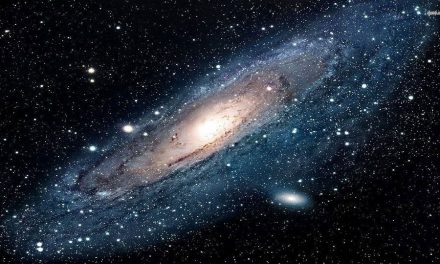By Alisa Childers
In a previous post, I argued that Adam and Eve’s historical existence is biblically affirmed and theologically necessary—but what about the evidence? Has science disproved their existence? Is the Genesis account just a quaint fairy tale invented by ancient Jews who were trying to figure out where they came from? What does the science actually say? First it must be noted that science doesn’t say anything. Scientists do.
Scientists gather evidence and then interpret that evidence to form a conclusion. Each scientist has certain pre-conceived biases, assumptions, and philosophical commitments. This is why different scientists can come to such radically diverse conclusions, even though they are working with the same evidence. This will be important to remember as you read through this post. Let’s look at 3 different pieces of evidence and see how they might interact with the biblical account:
1. Out of Africa
Has science disproved the existence of a literal Adam and Eve? If you were to ask just about any scientist 30 years ago, they would say unequivocally, “Yes! Science has shown us that humans can be traced back not to one primordial couple, but to many diverse populations of archaic human forms from all over the globe.” That is what is called the “multiregional hypothesis,” and today it is rejected by the vast majority of evolutionary biologists.
What is now more widely accepted is what is called the “Out of Africa Hypothesis” which claims that modern humans first appeared 50,000 to 100,000 years ago in one regional location, East Africa. From there they spread throughout the globe.
What does this mean for Adam and Eve?
Although the Out of Africa Hypothesis certainly doesn’t prove the existence of a literal Adam and Eve, it is definitely one step closer to agreement with the biblical account. The Bible teaches that when Adam and Eve were created, they were placed in the Garden of Eden. It’s exact location is debated, but the Gihon River described in Genesis 2 flows out of Cush, which is most likely modern day Africa. Even if Eden didn’t reach quite to Africa but was isolated to Mesopotamia, there is still no great challenge to the biblical narrative. Adam and Eve were cast out of the garden because of their sin, so biblically speaking, humanity’s population growth would have happened outside the Garden of Eden anyway.
2. Mitochondrial Eve and Y-Chromosomal Adam
Mitochondrial DNA and Y-chromosomal studies have allowed scientists to trace human origins to a single pair of humans—a single male and a single female. Naturally, scientists who are Christians are going to interpret this as evidence supporting the idea of a biblical Adam and Eve, while secular scientists aren’t so convinced.
As recently as the early 2,000’s, the general scientific consensus was that “Mitochondrial Eve” and “Y-Chromosomal Adam” existed roughly 100,000 years apart. This would certainly make it difficult to prove that they were a couple! However, recent challenges to that consensus bring them much closer together. Biochemist Dr. Fazale Rana wrote:
Now, based on better estimates of mutation rates for mitochondrial DNA, use of larger regions of the Y chromosome, and inclusion of rare Y chromosome variants, the dates for mitochondrial Eve and Y chromosomal Adam converge around 150,000 years ago.
What does this mean for Adam and Eve?
This evidence certainly can’t prove that the biblical Adam and Eve existed, but it does not disagree with or disprove the Genesis account. The Bible doesn’t tell us when Adam and Eve were created but very clearly communicates that they were created.
3. Primordial pair or population?
Based on the Mitochondrial Eve and Y-Chromosomal Adam evidence, many evolutionary biologists conclude that there must have been many “Adams” and many “Eves”—and that this DNA evidence only tells us about two out of many of the first humans. Based on scientific data regarding genetic diversity, they estimate that the first humans were never less than a population of a few thousand people—not a single pair.
The main problem with this conclusion is that it is entirely based on the assumption that Darwinian evolution is true. It is what is called a “theory-laden” hypothesis, in which scientists assume that humans evolved from a population because that is how evolution works. (Remember those biases and philosophical assumptions?) In other words, because in the evolutionary paradigm populations evolve—not individuals, it couldn’t be just a single pair—as the evidence seems to suggest.
What does this mean for Adam and Eve?
There are many reasons to reject the idea that humanity evolved from a large population, rather than a single pair (5 such reasons are articulated here), so there is no disagreement with the biblical narrative.
Conclusion
Has science proved that Adam and Eve existed? No. Has it proved that they couldn’t have existed? Definitely not. Thirty years ago, scientists believed that humanity evolved from various populations found all around the globe. Today they mostly agree that they evolved from one population, located in Africa. Less than twenty years ago, scientists claimed that the genetic evidence that traces humanity to one male and one female showed them to have lived about 100,000 years apart. Since then, studies have shown that gap to be much narrower.
Although we certainly can’t claim that science proves the existence of Adam and Eve, the trajectory of science seems to be going in the direction of the biblical narrative. The main point? Over the years, science has actually brought us closer to the plausibility of a literal Adam and Eve and not the other way around.
[If you want to learn more about this fascinating subject, check out Dr. Hugh Ross and Dr. Fazale Rana’s book, Who Was Adam? A Creation Model Approach to the Origin of Humanity.]












